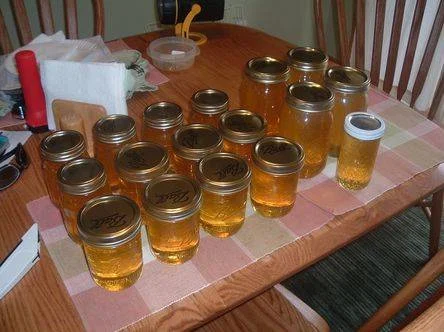So...You worked hard at setting up your hives and installing and feeding your bees, and they were very healthy and productive all summer long. You might be able to harvest a little honey the first season, or maybe you'll have to wait until the following year. Whatever the case, harvesting your own honey is very rewarding. Although it requires a bit of work, it's always worth it in the end. If you've ever heard horror stories about harvesting honey, don't worry...they did it wrong. If you study a little and make sure that you're prepared for whatever you might find when you begin the process, you should find that things go smoothly. The obvious question is: When/how often should one harvest honey from a Warré hive? Generally speaking, the answer is once a year...in the late summer or early to even mid-fall, depending on which part of the country you live in. If you have supered your hives (added a box or boxes to the top) with a sections box or framed hive body, you can remove those boxes as soon as the frames are filled with capped honey. Click here for instructions on removing supers. But as for traditional Warré honey harvesting, don't attempt to harvest too early or you'll run in to big problems. Regardless of how many boxes your hive(s) consists of, there is a high probability that there will still be some brood in every box until at least late summer. This is because during the heavy nectar flow(s), worker bees store honey at the top and on the sides of the brood nest. Because the brood cycle is 19-21 days long, workers can't just put honey wherever they want and force the brood nest to move down rapidly...they must wait for that brood to emerge. Therefore, the brood nest tends to become narrow and elongated, down the center of the hive from the lower half of the top box, to the bottom of the comb they have built. This is a natural condition, and please remember that you chose a Warré hive because you want something more natural for your bees. You cannot harvest honey from boxes that still contain brood. As autumn sets in and the temperatures begin to drop, the brood nest will become smaller and more concentrated toward the bottom of the hive, with workers moving uncapped honey from the sides and lower areas of the hive and back-filling the upper former brood cells as they become available. When the top box(es) contain only capped honey is when you may be able to harvest some.
Click on the links below to learn everything you need to know about harvesting honey.
Removing Boxes of Honey
Harvesting from Top Bar Hive Bodies
Harvesting from Framed Hive Bodies
Harvesting from Sections Boxes
